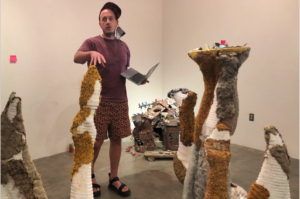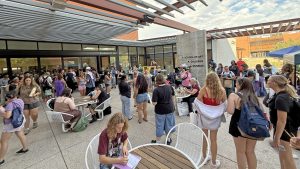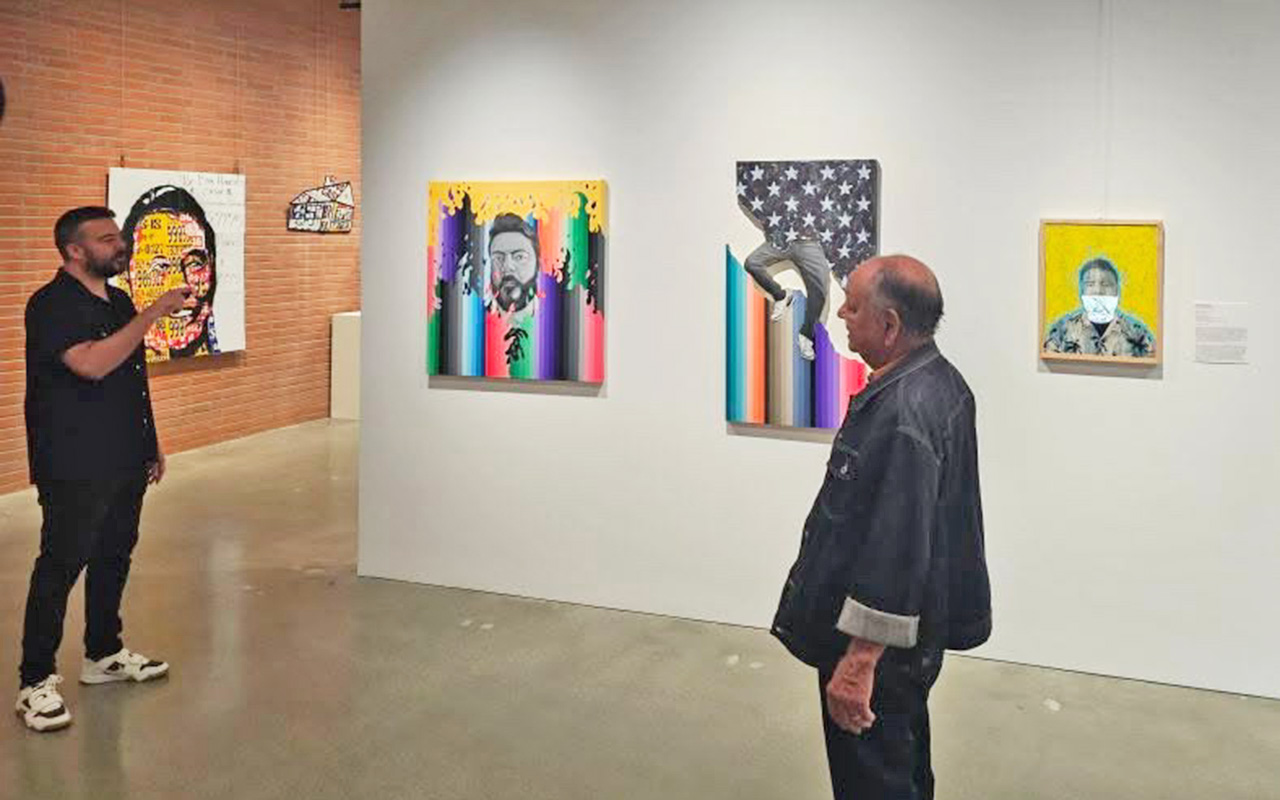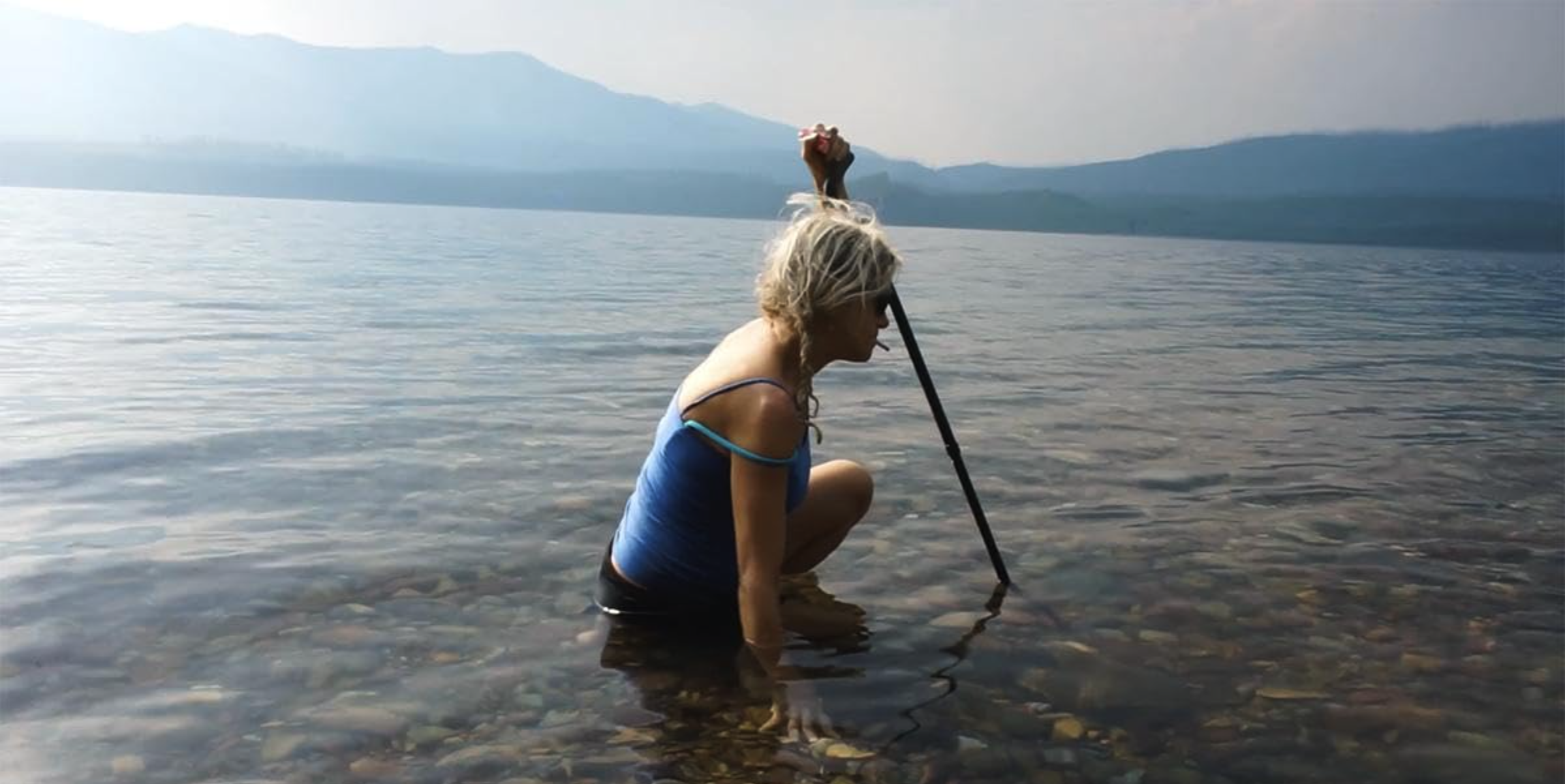
Mellon recipient Cordova hopes art project adds to border discourse
By Michael Chesnick. October 5, 2023As part of his fellowship to study and interpret the U.S.-Mexico border, Nathan Cordova not only is interviewing his labor-activist uncle, but the School of Art graduate student also is conceptually interrogating the border wall itself.
The result will be “Ghosts and Shadows,” a 20-minute audio/visual project that Cordova will screen locally in Tucson. Cordova, an MFA candidate in the school’s nationally ranked Photography, Video and Imaging program, is one of eight University of Arizona students to receive the 2023 Mellon-Fronteridades Graduate Fellowship.

Cordova plans to travel to Tijuana, Mexico, and has already visited the border wall in Nogales and the pre-1848 U.S.-Mexico border in Colorado. He also plans to do a second Q&A in Los Angeles with his uncle Raymond Cordova, a labor and civil rights organizer with the United Farm Workers and Cesar Chavez in the 1960s and ’70s.
“While the original impetus of my interview was to learn more about my uncle’s time with the UFW, he instead expanded my frame of reference for my own project to a world without borders, where all labor is dignified,” Nathan Cordova said.
In the end, the grad student hopes his project “can add to the discourse of possibilities that we collectively imagine about this material/immaterial entity we call the U.S.-Mexico border wall.”
“The part that excites me the most … is the way I’ve proposed to engage with the agency of the material that comprises a lot of the border wall,” Cordova said. “I find iron, of which steel is made, to be an incredibly poetic material — a material that is always working to return itself to the earth, despite the nation-state’s best attempts to prevent it. In this way, the iron that comprises the border wall is actively working toward its own destruction of form and its own transformation.”
Regents Professor Sama Alshaibi, Cordova’s thesis adviser, also is excited about his project.
“By mining his family history from a critical perspective on how the border permeated the lives of his kinfolk and other communities with similar consequences, and by researching the conditions of the (wall’s) structure and site through a direct and embodied presence, Nathan is forming a vehicle for an encounter at various scales of knowledge,” Alshaibi said.
“Nathan’s project shares that borders are not just facts on the ground but also penetrable material in their making and, therefore, physically functioning toward their undoing,” she said. “In other words, when borders are made, the artist, as an activist, archivist and storyteller, can similarly act as the agent remaking a radical knowledge surrounding its presence and meaning over time. The political embodiment of borders requires re-imagining the physical conditions implicated in their trespassing over land and lives.”
Sharing with the community
Cordova hopes to screen his audio/video artwork to the public by this December, followed by a community engagement discussion with group reflections and possibly guest scholars from the university community. He’ll also make the work available for classes and symposiums.

“Nathan’s project creates social and institutional conditions for productive dialogue about what borders are, what they mean, and what can be imagined otherwise,” Alshaibi said.
Cordova, 38, received his undergraduate degree in Journalism from the University of Oregon. He spent more than a decade running a freelance commercial photography business, including weddings, which took him throughout the U.S. Canada, Mexico and the Caribbean.
A multidisciplinary artist who works primarily with photography, video, sound, sculpture and performance, Cordova joined the MFA program at the University of Arizona in fall 2021. He’s independently published four artists’ books, including “One Man’s Body Family Album” (2020), and his commissioned work has appeared in WIRED.
“I learned a lot about myself in those early years,” Cordova said about his wedding and commercial photography. “I built a ton of self-confidence through the practice of showing up in a new place and immersing myself in a group of people I’d never met before.”
He and fellow graduate classmate Jacqueline Arias are active in the Southwest Photo Collaborative, which includes MFA students from the University of Arizona, Arizona State University and the University of New Mexico. Their recent artwork is part of the “Land, Body & Archive” traveling exhibition, which ran until Sept. 22 in Albuquerque and is slated to be at the School of Art’s Lionel Rombach Gallery from Oct. 26 to Nov. 3 and in Tempe in early 2024.
Cordova said his artwork maps the poetic, philosophical and historical exploration of family testimony by making meaning out of sites of struggle and locations of identity.
That’s where his uncle comes in. A civil rights champion, Ray Cordova spent 18 months in the ‘60’s with the “Freedom Summer Movement.” He served in the U. S. Army Airborne and was a sergeant in Vietnam.
“My uncle and I talked for six hours straight. He’s done so much in his life that I felt like we only got to skim the surface,” Nathan Cordova said. “Perhaps, the most surprising part was learning more about the truly international scope of the labor organizing he’s been involved in … Palestine in the two years leading up to the first Intifada, Rio under the (Brazil) dictatorship, and the Mexican port city of Lázaro Cárdenas during attempts to halt the passage of NAFTA.”
‘Honored’ and ‘validated’
The Mellon-Fronteridades Graduate Fellowship is run through the university’s Confluencenter for Creative Inquiry and the Mellon Foundation. The program supports current UArizona graduate students to carry out interdisciplinary humanities-centered research projects, and creative scholarly activities focused on the U.S.-Mexico border.
“I feel incredibly honored to have received this fellowship,” Cordova said. “I also feel incredibly validated. I proposed a project and methodology that I would personally describe as ‘out there.’ When thinking about art as research, the outcome is not yet known.”

In addition to visiting the border in Nogales, Cordova plans to collaborate with 2023 MFA graduate Mariel Miranda in Tijuana, Mexico, in November for a portion of his “Ghost and Shadows” project. A section of the border wall, made of steel slats, ends in the Pacific Ocean in Tijuana.
Miranda helped give Cordova feedback for his fellowship project draft.
“Mariel and I became close friends during our time together here. Her work addresses issues of labor, among other themes, as does my project,” Cordova said. “We feed off each other’s ideas, passion and support.”
Cordova, who teaches as a graduate assistant at the School of Art, grew up in Portland, Oregon, and started “making photographs with intention” after attending the Young Musicians & Artists (YMA) program the summer before his junior year, he said.
“I couldn’t articulate this at the time, but the way I see it now, and encourage my students to see it, is to use the camera and the photographic idea to be the authors of their own meaning,” he said. “Every picture we make, even if it’s just a quick snapshot on our cell phone will always tell us something about ourselves.”
Added Cordova: “I always make sure to say that I don’t care what they (the students) make work about, so long as they care about the topic or issue, that’s what matters. Sometimes this initial exploration via an art project will lead a student to pursue an interest in this topic in other classes or other departments outside of the School of Art.”
Why the University of Arizona?
Cordova said he chose the School of Art because of the Photo, Video and Imaging faculty and reputation, and conversations with then-current MFA students.
“Marocs Serafim, David Taylor, Martina Shenal and Sama are all amazing,” he said. “They are incredibly dedicated to their students. And not just that, they are driven and dedicated to their own art practices.”
One pleasant surprise, Cordova said, was connecting with Art History Assistant Professor Jeehey Kim, whose groundbreaking “Photography and Korea” book was just published. “I’ve loved her classes, and the material she teaches is robust and complex, yet totally relatable. She’s on my thesis committee as well,” he said.
Cordova is keeping his career options open after graduation in May 2024, but he said “mentoring or teaching will always be a part of my life.”
“Knowing what I know now because of my MFA experience thus far, I feel even more capable of sustaining a robust art practice while also maintaining a freelance career,” he said. “What I’m certain of is that I don’t want an office job. …
“I want to have and sustain a nourishing and impactful art practice that positions myself as an active agent in shaping the world, as much as that practice allows the world, in all its infinite complexities, to shape me in return.”
• Nathan Cordova’s website and Instagram
• Raymond Cordova bio, and online interview and radio interview about 1973 killing of Yemeni immigrant Nagi Daifallah







